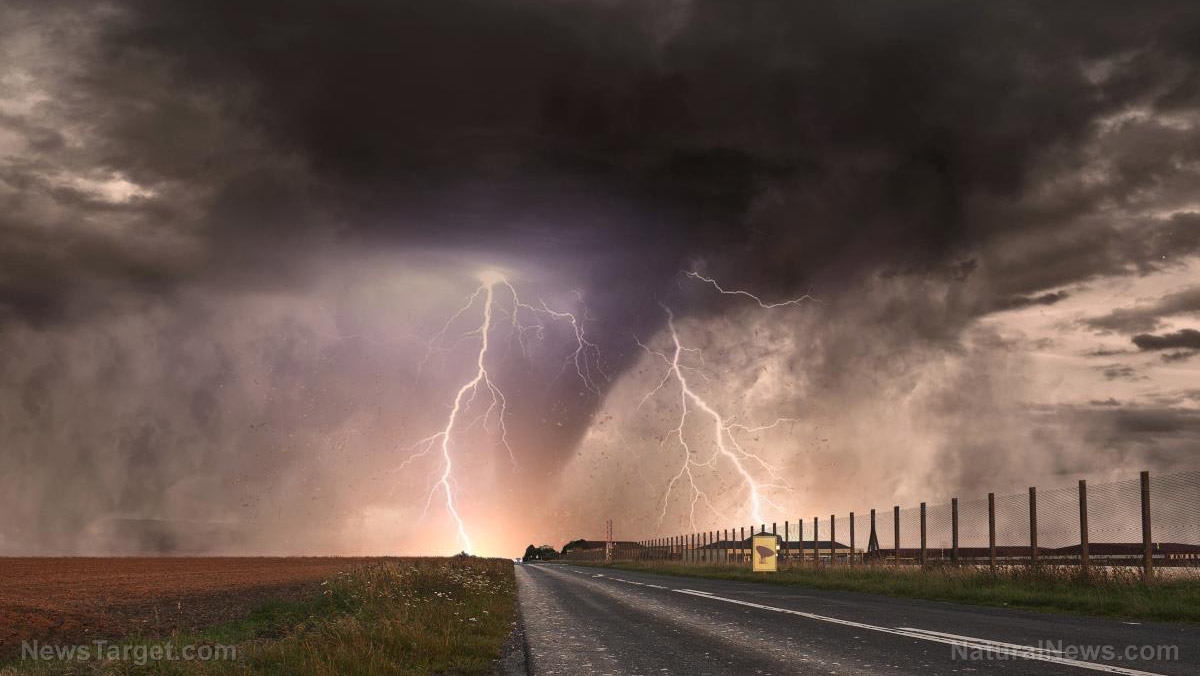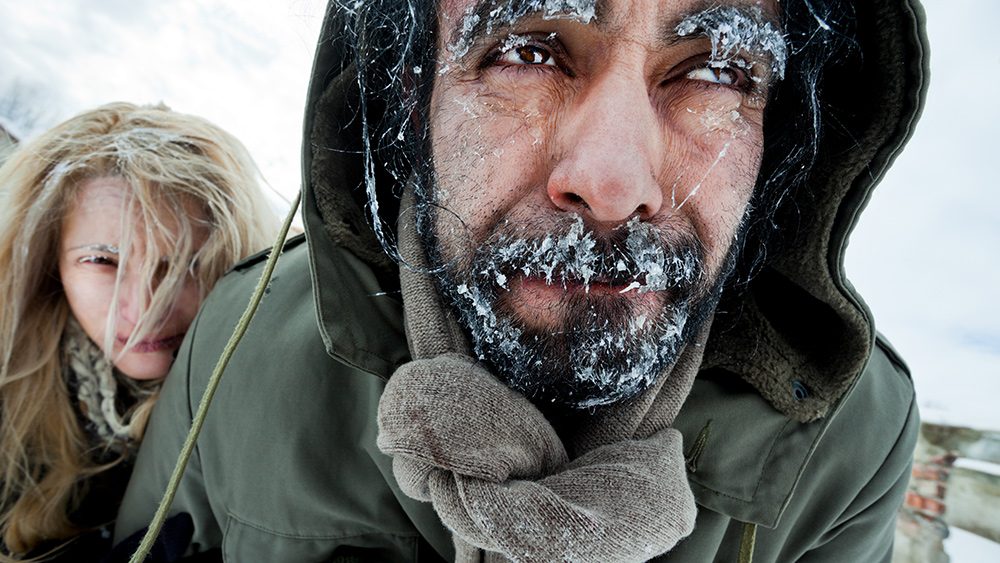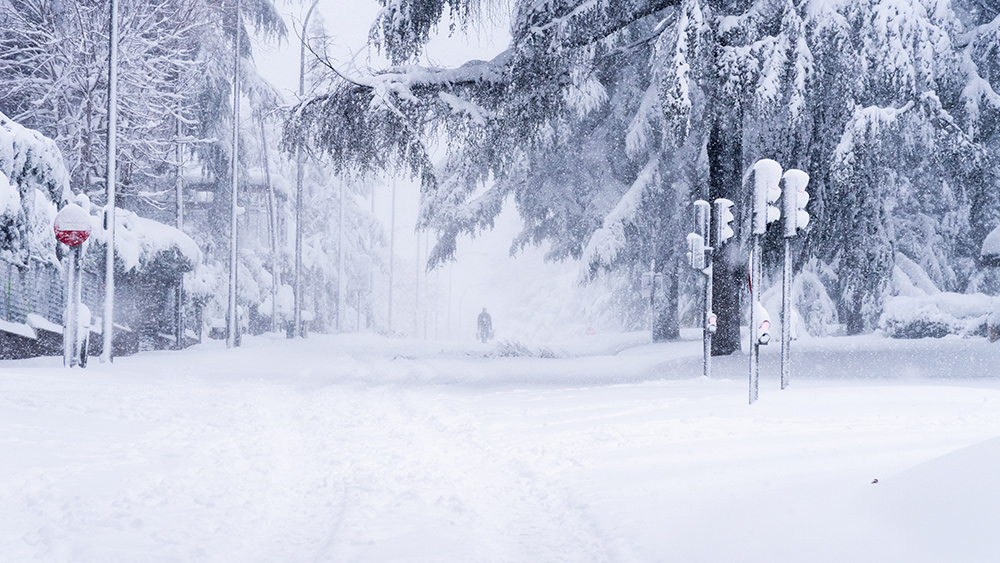
The Earth seems to grow more active and dangerous as years pass, given the constant media coverage on various natural disasters. These calamities often shake nations and leave no prisoners. As preppers, preparing for such things is second nature. If one of these disasters come your way, would you be prepared to face Mother Nature's fury? (h/t to ModernSurvivalBlog.com)
A deadly quintet
You can't stop natural disasters, but you can prepare for them. Listed below are the top five hazard risks in the U.S. as well as tips on how to prepare for each of them.
Floods
According to the Federal Emergency Management Agency (FEMA), floods are the most common natural disaster in the U.S. and can happen anywhere at any time. While the impact of these floods depends on factors like speed and water level, they are still devastating and can easily take the lives of the unprepared. Here are some tips for protecting yourself and your loved ones from being washed away:
- Learn. Take the time to find out if you live, work, or travel through areas prone to flooding. FEMA offers a Flood Map Service Center to help you figure out your area's flood risk. Additionally, it would be wise to take note of possible evacuation routes in the event of an imminent flood.
- Communicate. In any survival scenario, communication is key to staying alive. Keep important numbers written down on an address book, not just on your phone. Practice communicating with your family members so everyone can be prepared if SHTF.
- Store. Don't wait for disaster to strike before you start thinking about stockpiling. Store non-perishable foods in easy-to-reach areas so you can simply grab and go during an evacuation. Remember to store non-food essentials like flashlights and medical kits.
- Watch. Always keep an ear out for emergency announcements by tuning in to local radio or television stations. They rely on science-based predictions that are intended to provide adequate time for evacuation.
- Evacuate. If an alert from authorities advises evacuation, do so immediately. If you have time before bugging out, you can try to move important items to a higher floor and turning off all electronics.
Thunderstorms
Thunderstorms, while fairly common, are violent storms that can cause heavy damage if severe enough. According to the American Red Cross (AMCROSS), lightning produced by thunderstorms kills more people each year than tornadoes and hurricanes. These storms also cause flooding and power outages due to heavy rains and high winds. Here are some helpful tips to get you through the calm before the storm:
- Avoid windows. If your area is prone to thunderstorms, pick out a safe place in your home for your family members to gather. Steer clear of windows, skylights and glass doors – these can be shattered and blown away by strong winds.
- Watch the warning. Communities have warning systems that keep everyone updated in case of a possible calamity. Keeping up to date with these announcements can give you enough time to prepare.
- Trim. If you have shrubs or trees on your property, cut off any damaged branches and keep them all neatly trimmed. This would prevent them from toppling over due to strong winds and scattering debris.
- Lightning rods. If you want to go the extra mile for protection, you can consult your local fire department about installing lightning rods on your property to prevent fires.
Snowstorms
Winter's bite shows its full fury through snowstorms and blizzards. AMCROSS says that these frigid storms kill hundreds of Americans each year. Counter the cold with these preparedness tips:
- Invest in a generator. People living in a very snowy area can invest in a generator in the event of a power outage. Having one, alongside a decent supply of fuel, can make a big difference in surviving snowstorms.
- Winterize your vehicle. You wouldn't want your car breaking down while you're bugging out. Have your car maintained regularly to make sure it's in tip-top shape when you most need it. Installing good winter tires can also keep you from being stranded in the cold.
- Check on your heating sources. If you have a fireplace or other heat sources, always check and make sure that they are clean and operational.
- Prepare warm clothes. The cold will definitely bother you so pack up some winter clothes to keep yourself warm. AMCROSS recommends loose-fitting, lightweight clothes instead of bulky ones. If you ever feel too warm, just take off a layer. You can add more layers if the cold gets worse.
Tornadoes
These whirling columns of air tear through the U.S. during the spring and summer seasons, leaving nothing but devastation in their wake. FEMA states that about 1,200 tornadoes hit the U.S. every year.
These tips can help you create a proper tornado safety plan:
- Establish a safe room. Designate an evacuation room in your house for when a tornado hits. This room must have no windows and preferably be underground to protect yourself from flying debris. If you don't have a basement, you can use a small bathroom, a closet, or even the area under a stairwell for protection.
- Know your warnings. Familiarize yourself with your community's tornado siren so you'll know what to do when they start wailing.
- Look for signs. Alerts from the radio can keep you up-to-date on impending tornadoes. However, there are other means of knowing when a tornado is about to hit. Signs such as dark-green clouds, large hailstones, or a continuous roaring noise can all signify an imminent tornado.
Hurricanes
Hurricanes are massive storms that form over warm ocean waters and move toward land. With these storms come powerful winds, heavy rainfall, and inland flooding. Here are some ways to get you through hurricanes.
- Stay indoors. Do not go outside during a hurricane. Unless instructed to evacuate, it is best to stay at home until the storm passes. As mentioned earlier, avoid windows during storms. Reinforce them with storm shutters or plywood.
- Organize belongings. Bring loose, lightweight objects indoors to prevent them from becoming projectiles in high winds. Additionally, anchor down other objects that would be unsafe to bring inside.
- Inform others. Always keep a communication device prepared and fully charged so you can tell friends and family about your whereabouts.
Preparing for potential disasters is just part of a responsible prepper's lifestyle. By informing your family and friends about important safety guidelines and about your plans, you can help them survive Mother Nature at her worst.
Sources include:
FEMA.gov 1[pdf]
FEMA.gov 2[pdf]
Please contact us for more information.


















